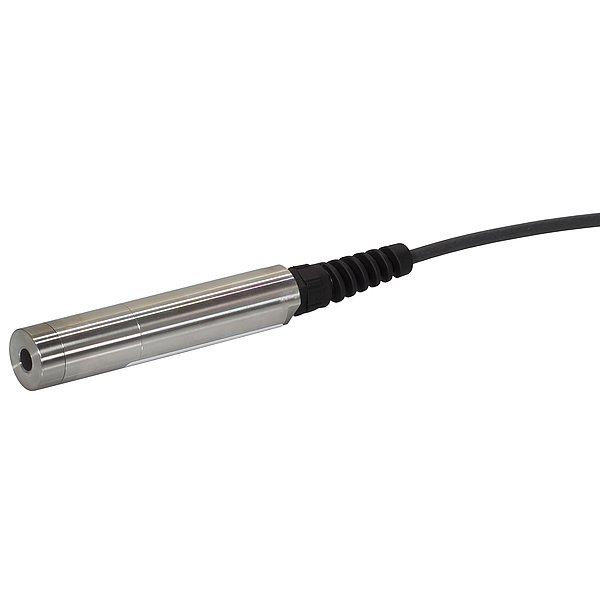Dissolved Oxygen Sensor
The oxygen sensor uses luminescence-based optical measurement technology and measures reliably and precisely. The low maintenance and small amount of consumable materials needed by the sensor provide immediate returns on investment. Only the membrane cap must be… Read more
| Measurement principle | Luminescence | |
| Parameter | Dissolved Oxygen | |
| Measurement range | 0...20 mg/L 0...20 ppm 0...200 % | |
| Measurement accuracy | ± 0.1 mg/L ± 0.1 ppm ± 1 % | |
| Resolution | 0.01 | |
| Measurement interval | > 5 s | |
| Resolution (temperature) | 0.01 °C | |
| Accuracy (temperature) | 0.5 °C | |
| Membrane Cap | No cross-sensitivity with : pH 1 – 14 ; CO2, H2S, SO2 Cross-sensitivity to Organic solvents, such as acetone, toluene, chloroform or methylene chloride Chlorine gas | |
| Material | Standard Version in passivated Stainless steel 316L body, strainer and screw, For Seawater application Version in Titanium body, strainer and screw, Cable : polyurethane jacket Steam gland : Polyamide Patch with active material (black) – Membrane : Optical isolation silicon | |
| Dimensions (L x Ø) | 146 mm x 25 mm | ~ 5.7˝ x 1˝ |
| Weight stainless steel | ~ 450 g | ~ 1 lbs |
| Weight titanium | ~ 300 g | ~ 0.7 lbs |
| Interface | RS-485 (Modbus RTU) | |
| Power consumption | 1 W | |
| Power supply | 12 V (± 10 %) | |
| Sensor cable | 2 m and 10 m | |
| Calibration/maintenance interval | 2 years | |
| Warranty | 1 Year (EU & US: 2 years) on electronics; All wearing parts are not included in the warranty | |
| Max. pressure | 5 bar | ~ 72.5 psig |
| Protection type | IP68 | NEMA 6P |
| Sample temperature | 0...+50 °C | ~ +32 °F... +122 °F |
| Ambient temperature | 0...+50 °C | ~ +32 °F... +122 °F |
| Storage temperature | -10...+60 °C | ~ +14 °F... +140 °F |
The oxygen sensor uses luminescence-based optical measurement technology and measures reliably and precisely. The low maintenance and small amount of consumable materials needed by the sensor provide immediate returns on investment. Only the membrane cap must be replaced every two years. The sensor can also be used in applications with a very weak water flow. The oxygen sensor is available with a 10-meter or a 2-meter cable.
- Low operation costs thanks to low maintenance (no electrolyte replacement)
- Larger calibration interval thanks to low deviations
- No polarisation voltage necessary
- High degree of measurement accuracy, even at low concentrations
- Fast response time
- No minimum inflow (no oxygen consumption)
Measurement of dissolved oxygen in surface water, aquaculture, seawater and drinking water and wastewater plants
-
D02-903en201912_brochure_Dissolved_Oxygen.pdf

